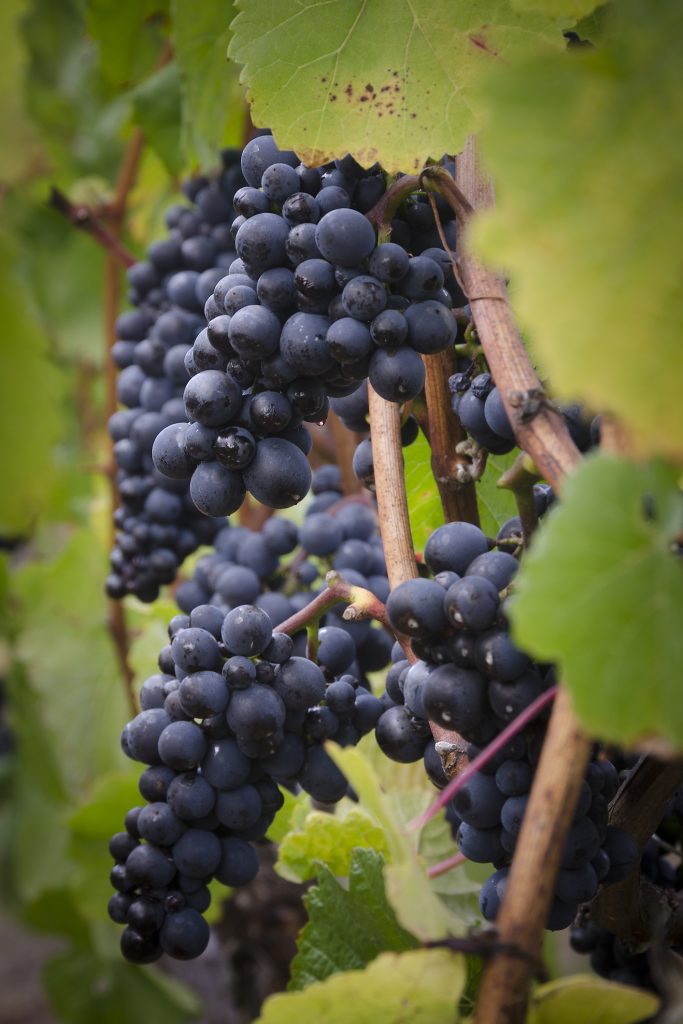Most wine lovers would agree that the best Malbec is to be found here in Argentina, but those in the know would also say that the main wine producer in South America still has a lot to share.
Argentine Pinot Noir, could be the next big surprise. Few would imagine that in the same vineyards where Malbec gives life to its signature juicy wines, the red queen of Burgundy shines its own light.
In fact, this varietal is already being cultivated in three of the most extreme and unique terroirs in Argentina: in Salta, Bodega Colomé plants it at 3,111m (10,207 feet), while Otronia in Chubut, Patagonia, has the southernmost vineyard in the orld and Trapiche, in Costa y Pampa, is just a stones throw from the Atlantic Ocean.
Silent Rising Star
Although the cultivation of Pinot Noir in Argentina has accelerated since the 1960s with the rise of sparkling wines, its hectares have only doubled in the last fifteen years.
This year, Laura Catena launched Domaine Nico, her Pinot Noir project: “In 1992, we started planting Pinot Noir de Dijon in Tupungato, in Mendoza’s high altitude vineyards. From the beginning, the wines were very good, but then Malbec demanded our attention. We continue to develop Pinot Noir in higher and colder areas. This is how we created our collection from five different vineyards in the Uco Valley ”. At the same time, Rutini, Salentein and other producers of Mendoza bet on this varietal whose first wines offered an exquisite typicity, but at the same time, great potential for ageing. “Trying the first vintages convinced us of the potential of Pinot Noir from high altitude vineyards”, said Catena Zapata.
In 2005 however, Piero Incisa della Rocchetta, surprised the world with wines from his bodega Chacra. From Mainqué, a remote corner in the province of Río Negro, in Patagonia, this Italian producer makes a collection of Pinot Noir from two old vineyards, one from 1932 and another from 1955, which were rescued from abandonment. The quality and reputation obtained by the first harvests of these wines made many experts give this varietal a new opportunity in Argentina.
Currently, the 2,000 hectares dedicated to Pinot Noir are distributed throughout the country and styles are varied according to origin.
What to look out for to understand Argentine Pinot Noir
Río Negro is for many a synonym for old-world Pinot Noir in Argentina. The key is in the old vineyards of the region. For example, Humberto Canale, a pioneering winery in the area, produces Humberto Canale Old Vineyard La Isabel with strains from 1969, while Chacra 1932 and Chacra 1955 are the most precious jewels in the region.
In Neuquén, the other bastion of Patagonian wine, Pinot Noir is achieved with a style closer to California, concentrated and fleshy, the product of a sunnier climate. According to Leonardo Puppato, winemaker of Familia Schroeder, “Pinot Noir is a very new grape for Argentine vineyards and in Patagonia it has adapted very well. My concern about these wines allowed me to discover that we must work more in the vineyard than in the winery. We should manipulate it as little as possible because naturally, great results are achieved”. Good examples to try are FIN Single Vineyard, from Bodega del Fin del Mundo, and Saurus Barrel Fermented, from Familia Schroeder.
In the words of Paz Levinson, currently the best Argentine sommelier, based in France, “the Pinot Noir of Argentina is very distinctive and special. If we talk about the Pinot Noir of Patagonia, for example, the alcohol is well balanced, between 12 and 13%, with well pronounced fruit intensity. These characteristics make me think of the combination of acidity and moderate alcohol in Willamette Valley in Oregon”, she says.
Chubut, the last frontier of Patagonian winemaking, has the southernmost vineyards on the planet, with a chilly climate ideal for Pinot Noir. Rugientes 45 and Otronia are the wines to try, both made by Alberto Antonini with Pedro Parra in the vineyards. Here freshness, medium body and tension suggest that a Volnay style is possible in Argentina.
In Mendoza, the possibilities are endless, mainly in the high vineyards of the Uco Valley. As with Chardonnay, Pinot Noir stands out in Gualtallary and other corners of Tupungato. “Mendoza allows us to elaborate a very fine but lush Pinot style that any lover of Pinot will know how to enjoy”, insists Laura Catena. Here the equation of height, cool weather and good sunshine gives rise to intense exponents, fruity profiles, typical expressions with earthy tones, truffles and fungi. Perhaps they are comparable, at the moment, with Sonoma, Central Otago or Washington Estate.
To have an impression of the Pinot Noir of Tupungato, look out for Domaine Nico Le Paradis, from a vineyard at 1500m, or Norton Altura, made with grapes from nearby, or perhaps Rutini Pinot Noir, whose old vintages are soaring. The new Rutini Anthology L, made in the unique 2016 harvest, will get mouths watering too. Pepe Galante, the winemaker of Salentein, is another expert of this varietal, and his Salentein Single Vineyard Los Jabalíes de Tunuyán proves it, as does the Porfiado Zorzal from Juan Pablo Michelini.
Levinson maintains that “the wines from colder regions of Mendoza are the ones that show how well this difficult strain has adapted. We’re looking at a great future for La Carrera, Tupungato, and places like GI Pampa El Cepillo or GI San Pablo (with altitude, exposure and chalky soils and cooler temperatures) which can achieve this balance with ease”.
From El Cepillo, in the southern area of the Uco Valley, for example, good wines to try are Pintom, from bodega Canopus, specializing in the production of natural wines, and Escorihuela Gascón, Pequeñas Producciones Pinot Noir, from the young winemaker Matías Ciciani Soler.
One thing’s for sure: good Pinot Noir is to be found in the land of Malbec, and for anyone wanting to be surprised, Argentina can offer some of international standards from various climates. So let’s get drinking!




Argentine pinot noir is awesome, and the first time I had this drink, I was ecstatic. I remember I was in Argentina with my friends when I tasted this for the first time. I won’t ever forget this experience.